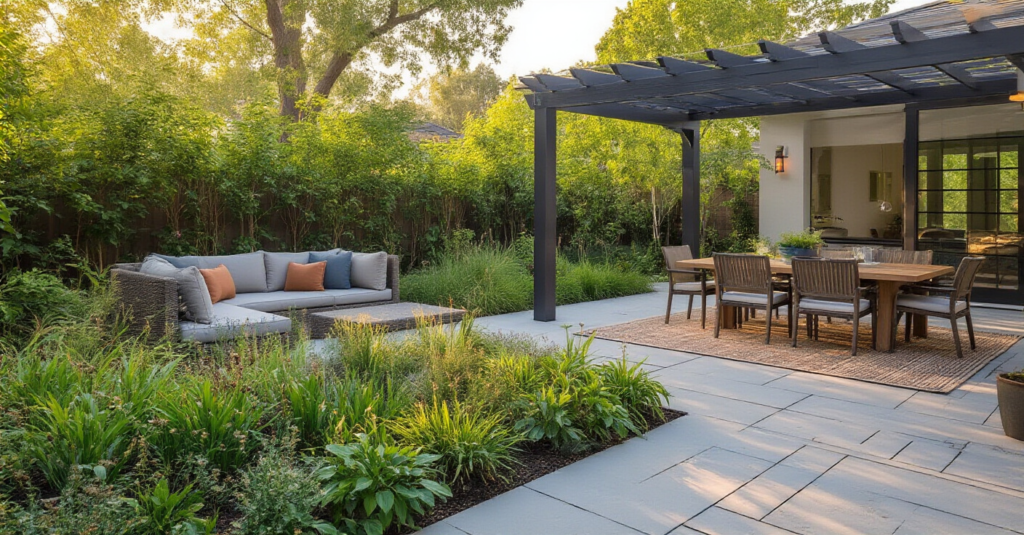You know the question people always ask me when they find out what I do? It’s not about paint colors or sofa fabrics. It’s almost always, “Margot, my house feels pretty good, but my backyard… it’s just… there. How do I make it feel like a part of my home?” They have this beautiful patch of earth, this potential for a sanctuary right outside their door, yet it feels disconnected, like an afterthought. They think the secret is having a huge budget or some grand, complicated design.
But the real secret, the one I’ve seen transform spaces and lives, isn’t about having the fanciest patio or the most exotic plants. It’s about understanding that your outdoor space is a living, breathing environment with the power to either drain your energy or restore it. It’s about creating a space that nurtures you on a deep, fundamental level. These 20 principles are my way of showing you how to do just that—how to create a backyard that’s not just beautiful, but is a true partner in your well-being.
Laying the Groundwork: Essential Planning for Your Backyard Oasis (Part 1)
Before you even think about picking out a plant or a paver, we have to talk about the foundation. So many people skip this part because it feels less exciting, but trust me, getting this right is the difference between a space that works and one that constantly fights you. This is where we listen, plan, and align the space with how you actually live.
1. Define Your Outdoor Lifestyle & Needs Clearly
Okay, first things first. Forget the glossy magazines and Pinterest boards for a minute. The biggest mistake I see is people designing a space for a fantasy life instead of their real one. I once had a client who was adamant about building this massive, multi-level deck for all the huge parties he was going to throw. We built it, and it was beautiful. A year later, he confessed he’d used it twice because what he actually is, is a quiet guy who likes to read a book with his dog on Sunday mornings. We spent a fortune on a stage for a play he was never going to put on.
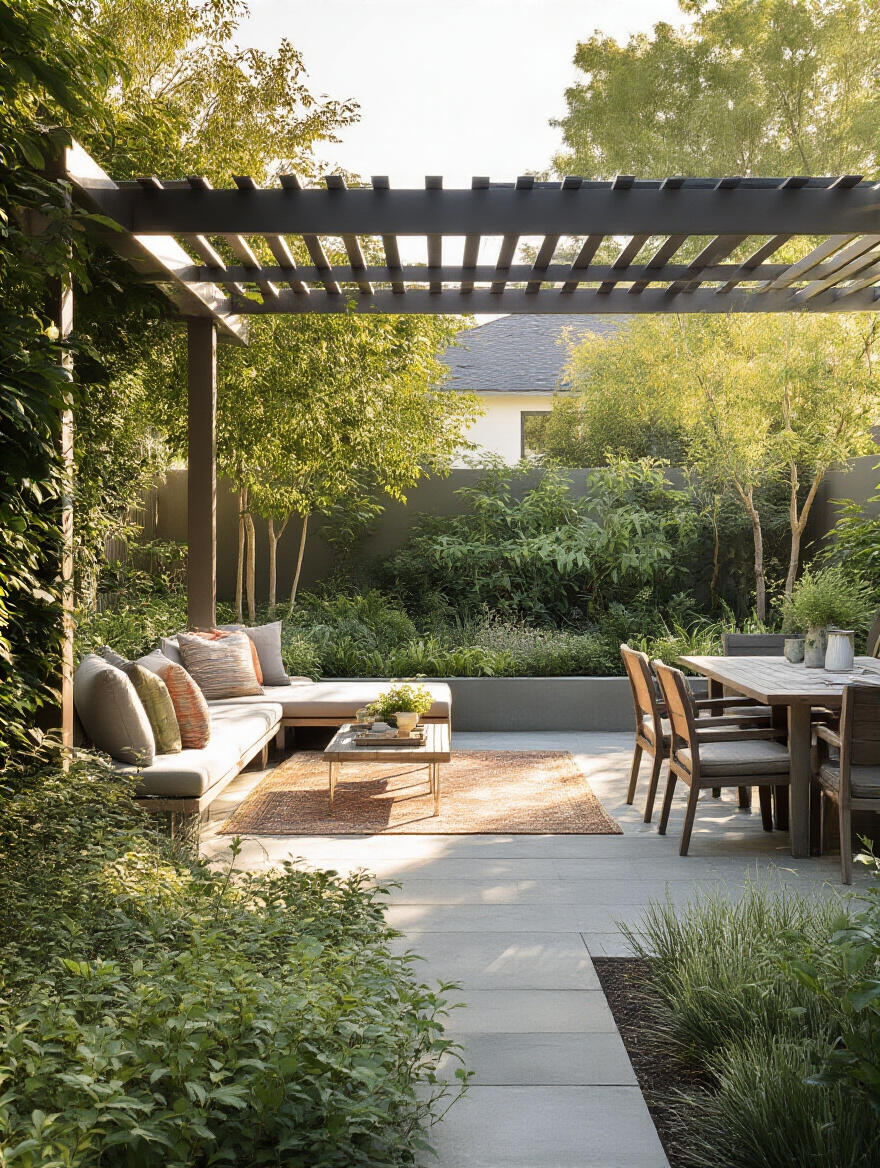
So, get brutally honest with yourself. How do you want to feel out there? Do you crave quiet solitude with a cup of tea? Do you need a durable space for your kids to run wild and burn off energy? Will you be grilling for a few friends or hosting the whole neighborhood? List the activities, but more importantly, list the feelings: “calm,” “energized,” “connected,” “private.” This isn’t just a questionnaire; it’s the emotional blueprint for your entire project.
This emotional blueprint becomes your North Star, guiding every single decision you make from here on out.
2. Conduct a Thorough Site Analysis for Optimal Placement
Your backyard already has its own story, its own personality. It has sunny spots and shady corners, areas where the wind whips through, and quiet, still pockets. The noise from the street is louder in one place, and the birdsong is clearer in another. The common approach is to ignore all this and impose our will on the land. But the wellness approach is to listen first. It’s about working with the space, not against it.
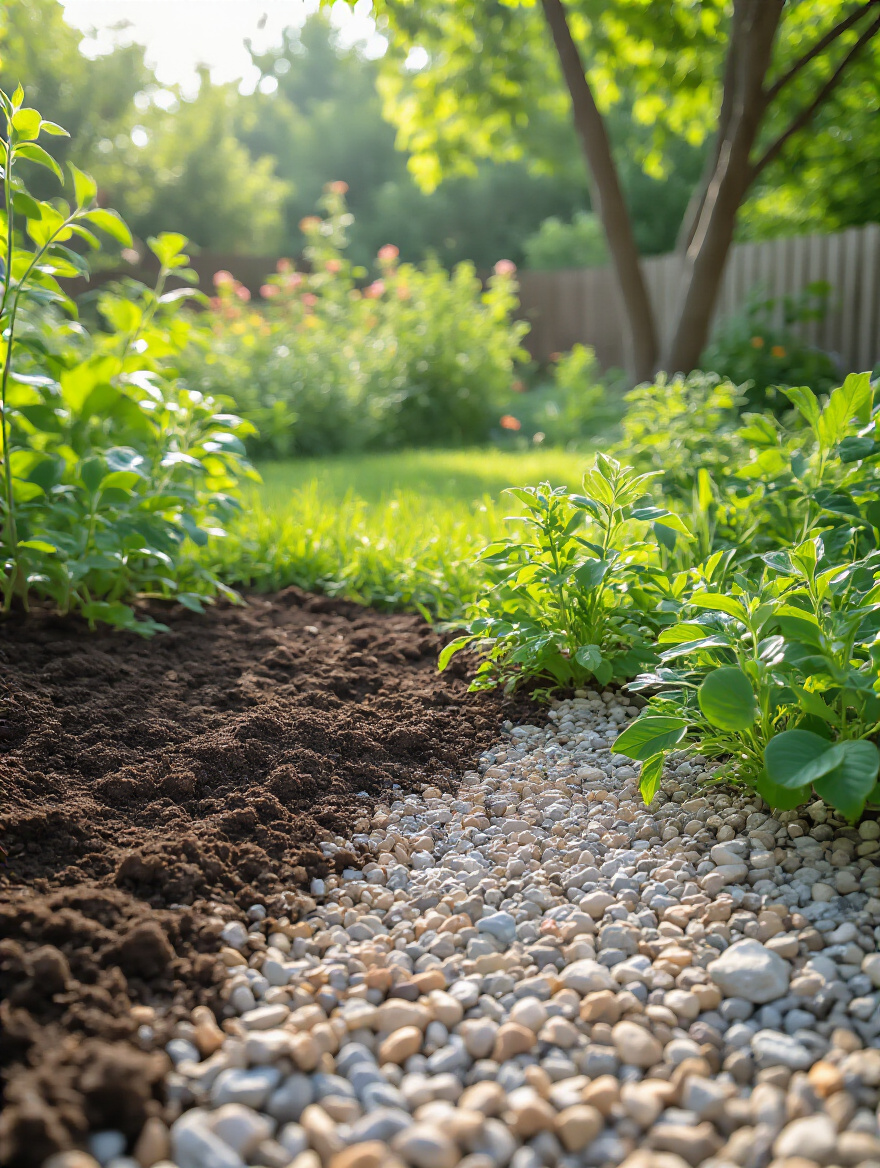
My shortcut for this? Spend a year—or at least a few seasons—just observing. Don’t do a thing. Take a camp chair and your coffee and sit in different spots at different times of day. Where does the morning sun feel best? Where do you want to be at sunset? Is there a spot that’s naturally sheltered from the wind? This isn’t a technical survey; it’s an act of mindfulness. You’re learning the unique energy of your land. I promise you, the land will tell you exactly where the reading nook and the dining table belong.
Once you’ve tuned into the subtle energies of your yard, you can start thinking about the more concrete plans.
3. Establish a Realistic Budget to Guide Your Design Choices
Let’s talk about money, because nothing creates more stress than a runaway budget. People see it as a restriction, but I want you to reframe it: a budget is a tool that gives you clarity and freedom. It forces you to prioritize what truly matters to your well-being. Do you need the expensive Italian pavers, or would a simple gravel patio and some incredible, sensory plants bring you more daily joy? The budget helps you answer that.
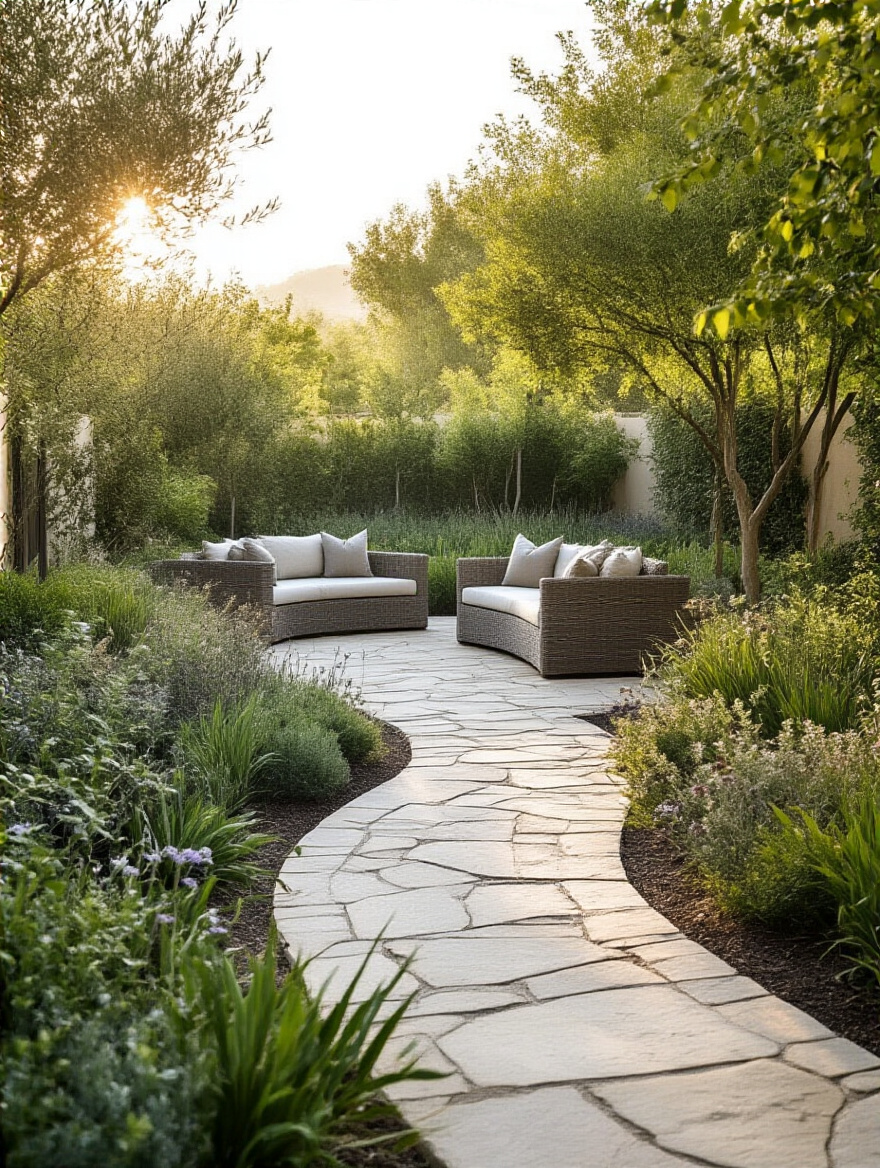
Here’s the BS everyone falls for: the sticker price. They forget about the “unsexy” costs. That beautiful patio needs a compacted base, which might mean excavation. That stunning perennial bed might need tons of compost to amend your terrible clay soil. This is where people get into trouble. So here’s my non-negotiable rule: whatever your total number is, immediately take 15-20% off the top and earmark it as your contingency fund. Don’t even look at it. You will need it, and having it there will save you sleepless nights.
With a clear financial map, you can begin to translate your vision into a concrete plan without the anxiety of the unknown.
4. Create a Scaled Master Plan with Defined Zones
If you just start adding things to your backyard—a patio here, a garden bed there—you end up with a collection of objects, not a cohesive space. It feels chaotic and disjointed, which is the opposite of the calm we’re after. A master plan is just a simple, to-scale drawing that lays out how different “rooms” or zones in your yard relate to each other. It ensures a sense of flow and intention.
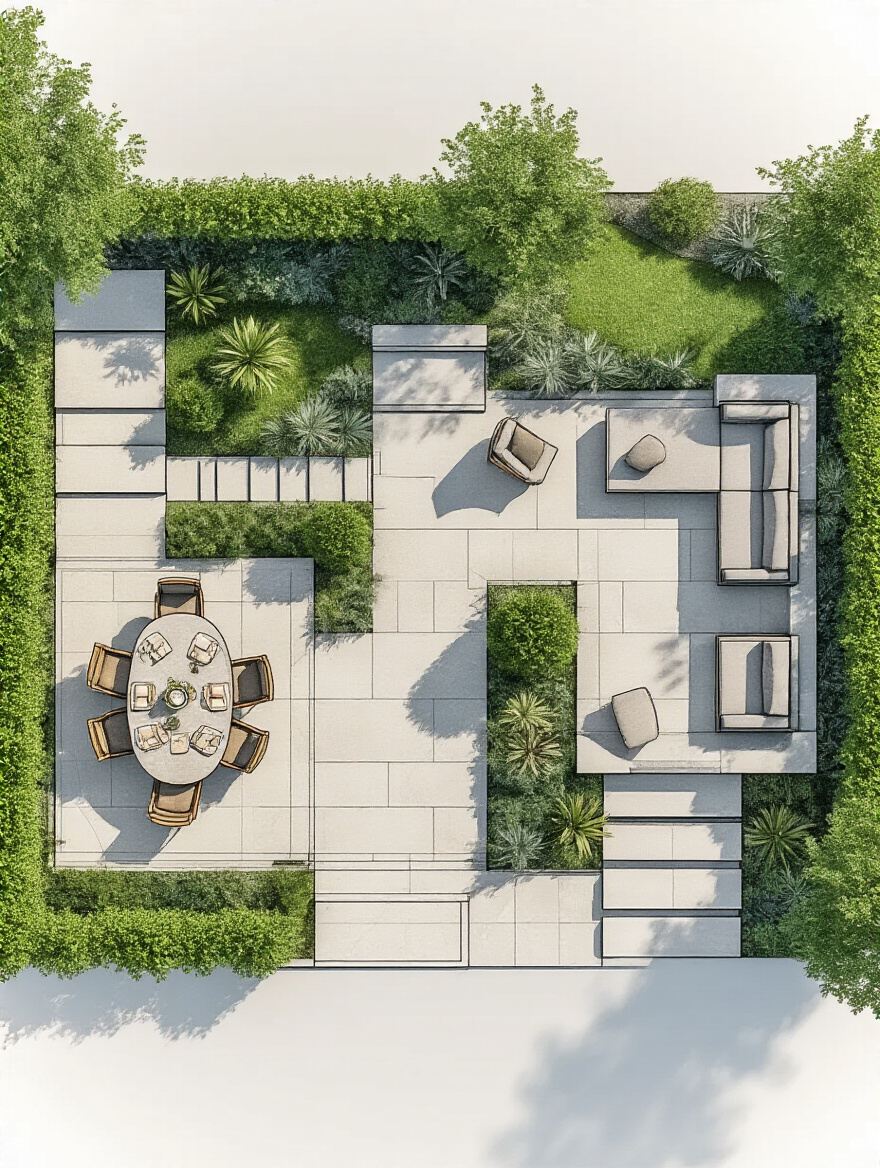
Think of it like you would the inside of your home. You need a “social zone” for dining and conversation, a “quiet zone” for reflection, and a “play zone” for activity. The plan maps out how you move between them. The path from your back door to your vegetable garden shouldn’t feel like an obstacle course. I learned this the hard way in my first home, where I put a beautiful herb garden in the sunniest spot… which happened to be on the complete opposite side of the yard from my kitchen. It looked great, but I barely used it because it was so inconvenient. The plan prevents those kinds of functional mistakes.
This plan doesn’t have to be a professional architectural drawing; it just has to be your guide for a yard that flows.
Laying the Groundwork: Essential Planning for Your Backyard Oasis (Part 2)
Now that we have the human-centric part of the plan down—how you live, your budget, your flow—we need to bring in the most important collaborator: nature itself. Working with the existing ecology of your space is the single most effective thing you can do to create a landscape that is resilient, beautiful, and low-stress.
5. Research Local Climate and Native Plant Species for Sustainability
I have a confession: early in my career, I was obsessed with lavender. I dreamt of fragrant purple fields. The problem? I was living in a humid, East Coast climate with heavy clay soil. Lavender wants dry, gravelly, Mediterranean soil. I planted it, and it promptly rotted. I spent two years fighting a losing battle, trying to force a plant to be somewhere it didn’t want to be. It was stressful, expensive, and a total failure.
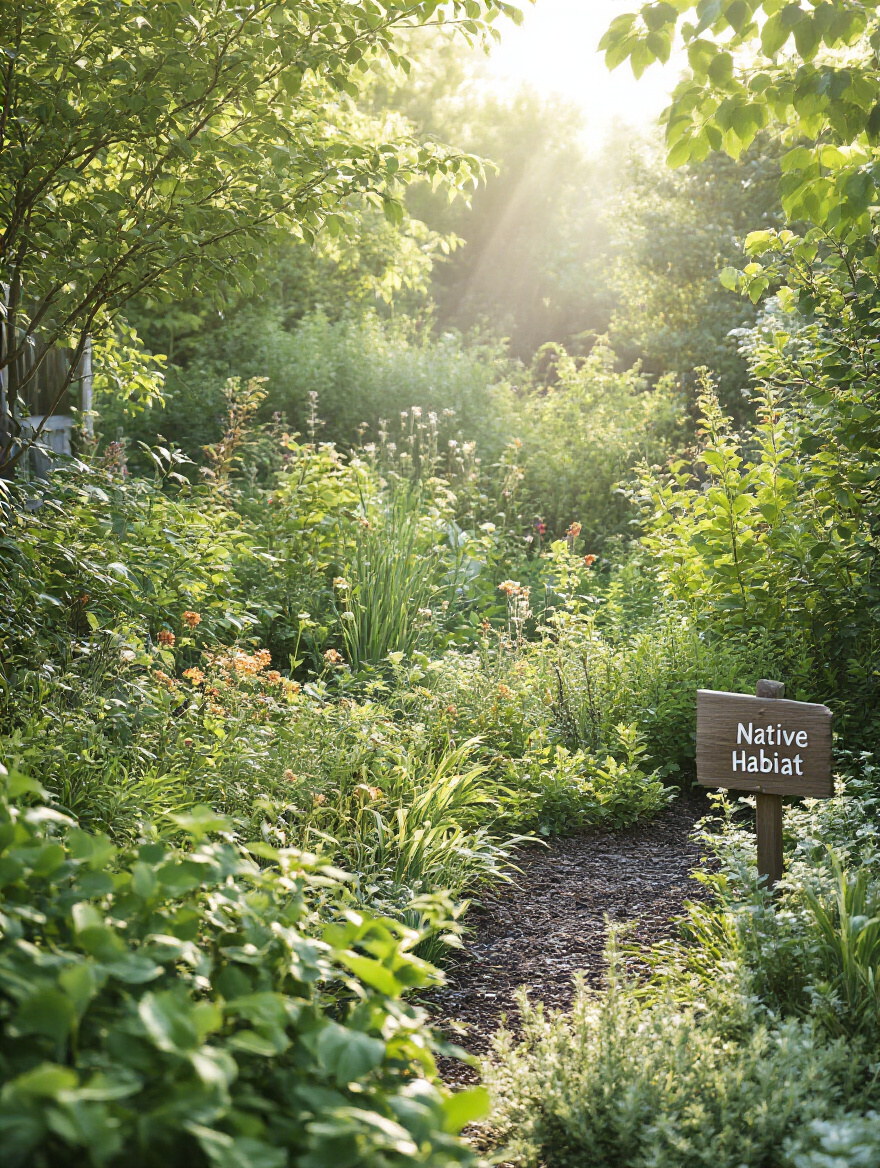
That’s when it clicked. The goal isn’t to create a perfect replica of a garden you saw in a magazine from another continent. The goal is to create a thriving ecosystem right where you are. Native plants are the key. These are the plants that have spent thousands of years adapting to your exact soil, rainfall, and climate. They don’t need you to baby them. They provide food and shelter for local pollinators, which in turn brings your garden to life. A garden humming with bees and butterflies has a scientifically proven calming effect. You’re not just planting things; you’re creating a habitat.
By choosing plants that want to be there, you move from a relationship of constant work to one of joyful co-creation.
Bringing Your Vision to Life: Core Design Elements & Installation (Part 1)
With a thoughtful plan in hand, it’s time for the fun part: bringing the vision to life. This is where we start working with physical materials and plants to build the bones of your new sanctuary. We’ll focus on the core elements that provide structure, function, and life.
6. Choose Durable & Stylish Hardscaping Materials
The surfaces you walk on and live on—your patios, paths, and walls—are the bones of your backyard. They ground the space. From a wellness perspective, the materials you choose have a sensory impact. The cool, solid feel of bluestone under bare feet on a summer evening is a profound grounding experience. The texture and color should complement your home, of course, but also think about how it will feel.
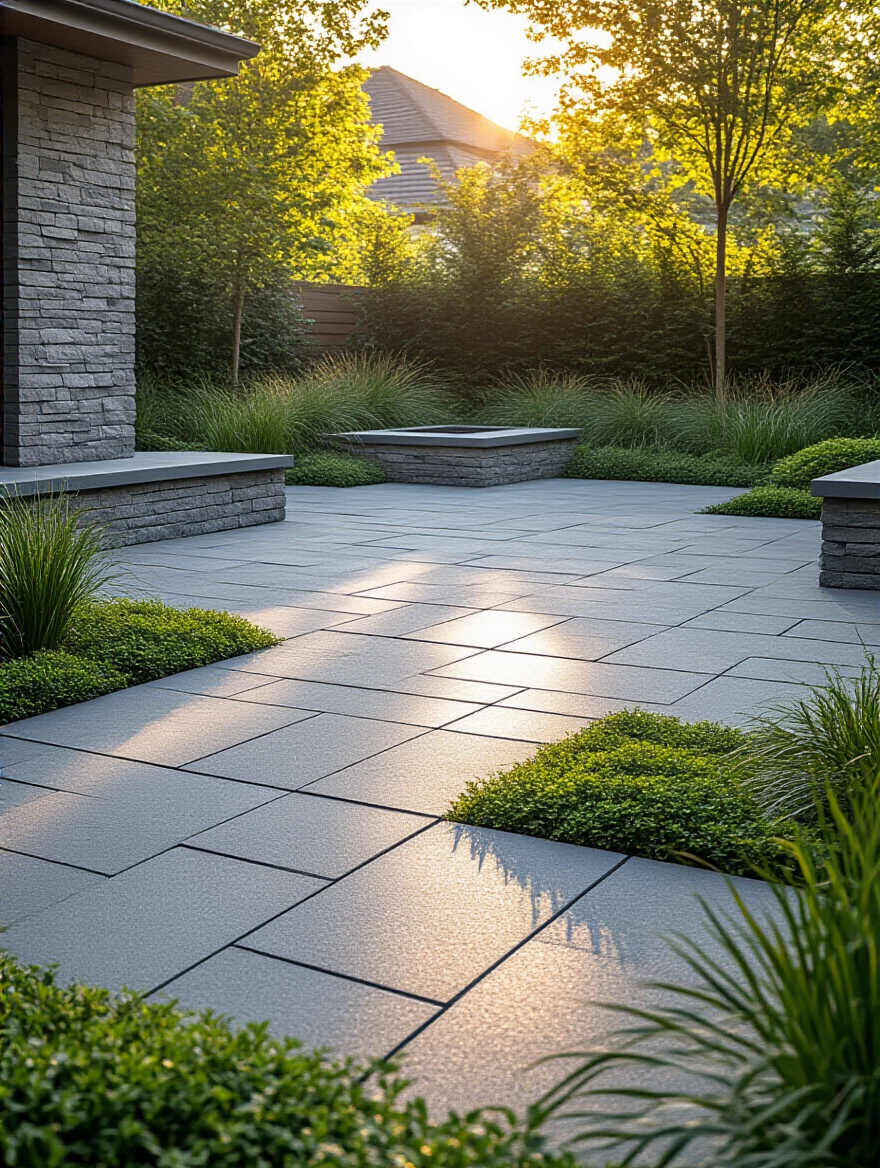
Don’t just chase the cheapest option. A poorly installed paver patio that heaves and cracks after two winters will be a constant source of low-grade stress. Investing in a proper foundation and durable materials that can handle your climate is an investment in long-term peace of mind. A patio shouldn’t be a source of anxiety on your to-do list; it should be a stable, welcoming platform for your life.
These grounding elements provide the stage upon which the softer, living elements will perform.
7. Select and Group Plants Based on Sun, Soil, and Water Needs
You know that saying, “right plant, right place”? It’s the most profound and simplest piece of gardening advice there is. Putting a shade-loving fern in a baking hot, sunny spot is an act of cruelty. It will be perpetually stressed, and so will you, trying to keep it alive. The key is to group plants that have similar needs together, creating happy little communities.
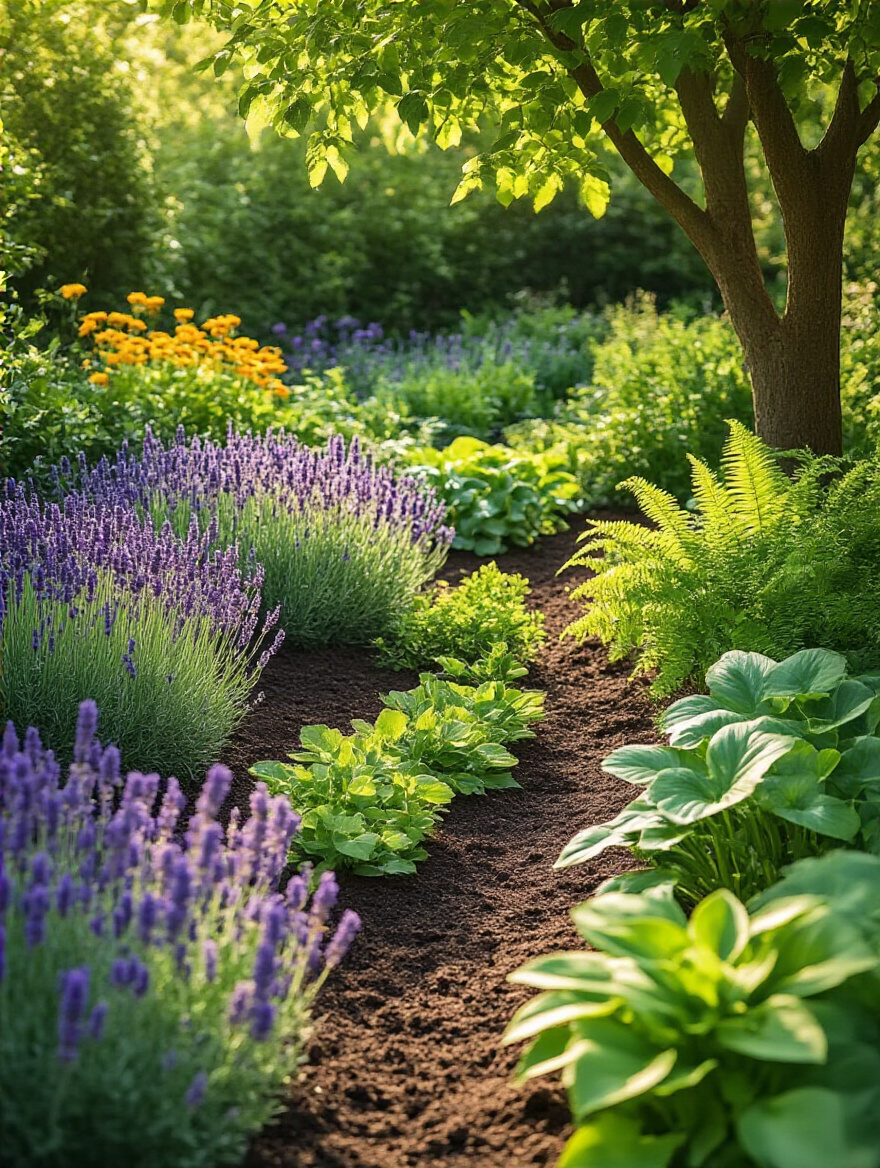
Think of it as planning a dinner party. You wouldn’t seat a loud extrovert next to a quiet introvert who just wants to read. In the garden, you put all the sun-loving, drought-tolerant plants together in the hot, dry part of the yard. You put the moisture-loving plants together in that low, shady spot. This way, you can water and care for them efficiently. You’re creating zones of harmony, which means the plants thrive and you aren’t running around with a watering can all day.
This thoughtful grouping creates a garden that largely takes care of itself, leaving you more time to simply enjoy it.
8. Implement Efficient Irrigation Systems for Water Conservation
If thoughtful plant grouping is about creating harmony, then an efficient irrigation system is like a self-care routine for your garden. So many people just blast everything with a sprinkler, which wastes an incredible amount of water and often does more harm than good by promoting shallow roots and fungal diseases. It’s the equivalent of chugging a gallon of water once a week instead of sipping throughout the day.
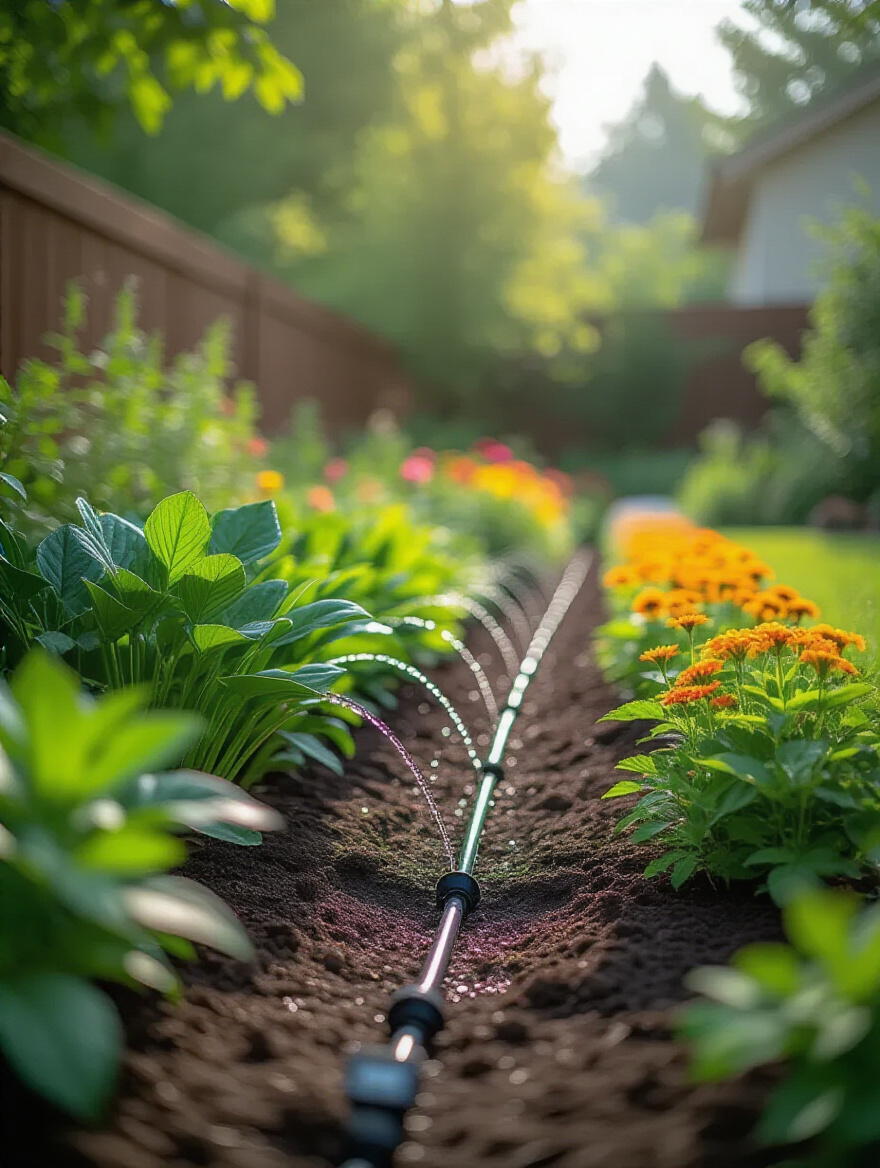
Drip irrigation is the answer. It’s a network of tubes that delivers water slowly and directly to the roots of each plant, right where it’s needed. There’s almost no evaporation or runoff. It’s a mindful, intentional way of watering that mimics natural rainfall. Paired with a smart controller that adjusts based on the weather, it means your garden gets exactly what it needs without you having to think about it. It’s less work, less water, and dramatically healthier plants. What could be better for your well-being than that?
With the garden’s hydration needs met, we can turn our attention to how we move through the space.
9. Install Functional Walkways and Patios for Seamless Movement
Your pathways do more than just get you from point A to point B. They choreograph your experience of the garden. A straight, narrow path says “hurry.” A gently curving, wider path invites you to slow down, to meander, to see what’s around the next bend. The flow should feel effortless and intuitive, guiding you naturally to the different zones we planned.
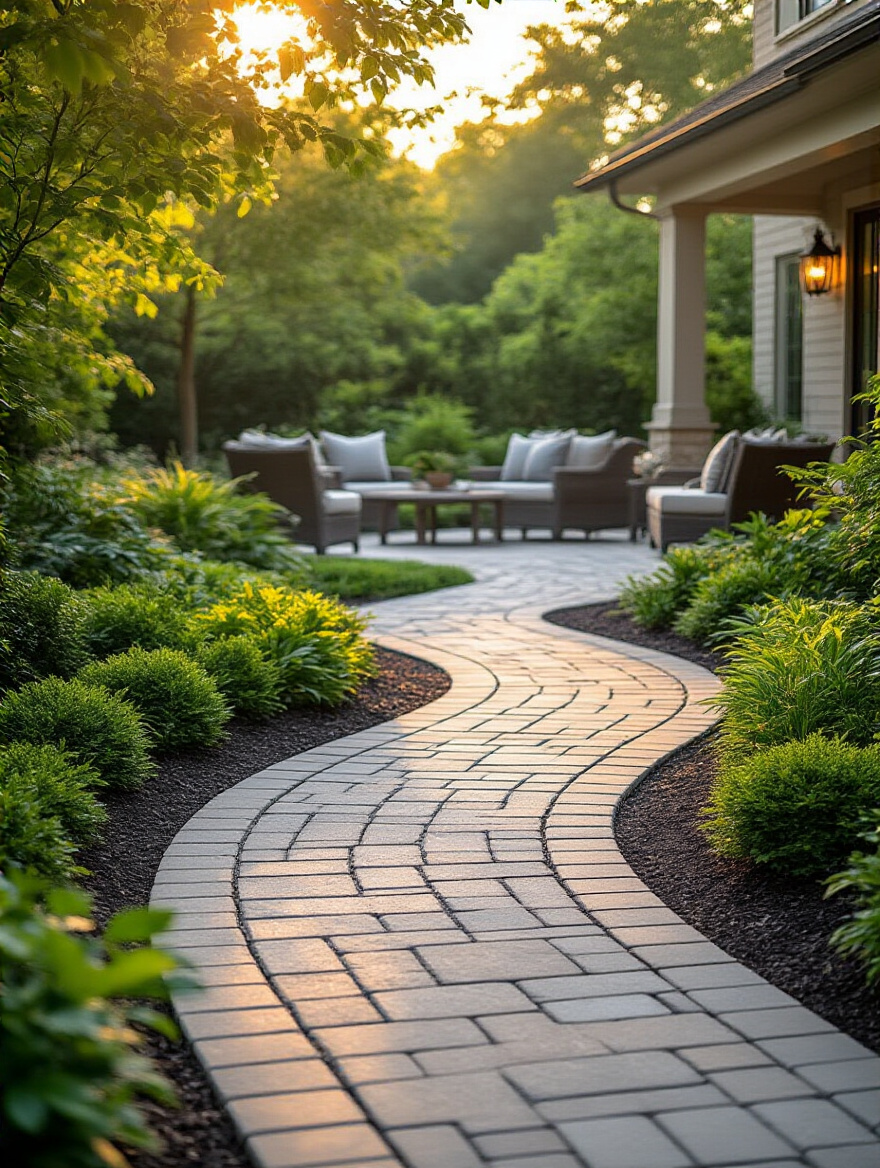
Patios are your outdoor living rooms. The biggest mistake people make here is undersizing them. You need enough space for your furniture and for people to comfortably walk around it. There’s nothing relaxing about feeling cramped. Before you build, take your outdoor furniture (or cardboard boxes that are the same size) and place them in the proposed area. Walk around. Does it feel gracious and inviting, or tight and awkward? Functionality is the foundation of relaxation.
These structural elements ensure your time outside is effortless and enjoyable, paving the way for more detailed, functional additions.
Bringing Your Vision to Life: Core Design Elements & Installation (Part 2)
We’ve laid the bones and established the flow. Now we’re adding layers of function and privacy that transform the space from a simple yard into a true sanctuary—a place where you can feel safe, nurtured, and deeply connected to nature.
10. Construct Raised Beds or Containers for Diverse Planting Options
There’s something incredibly therapeutic about growing your own food or flowers. But for many, bending down to ground level is a physical strain. Raised beds are a game-changer for accessibility. By bringing the garden up to you, they make planting, weeding, and harvesting a joy rather than a chore. This simple change can make gardening possible for people with back problems or mobility issues, connecting them to an activity with proven mental health benefits.
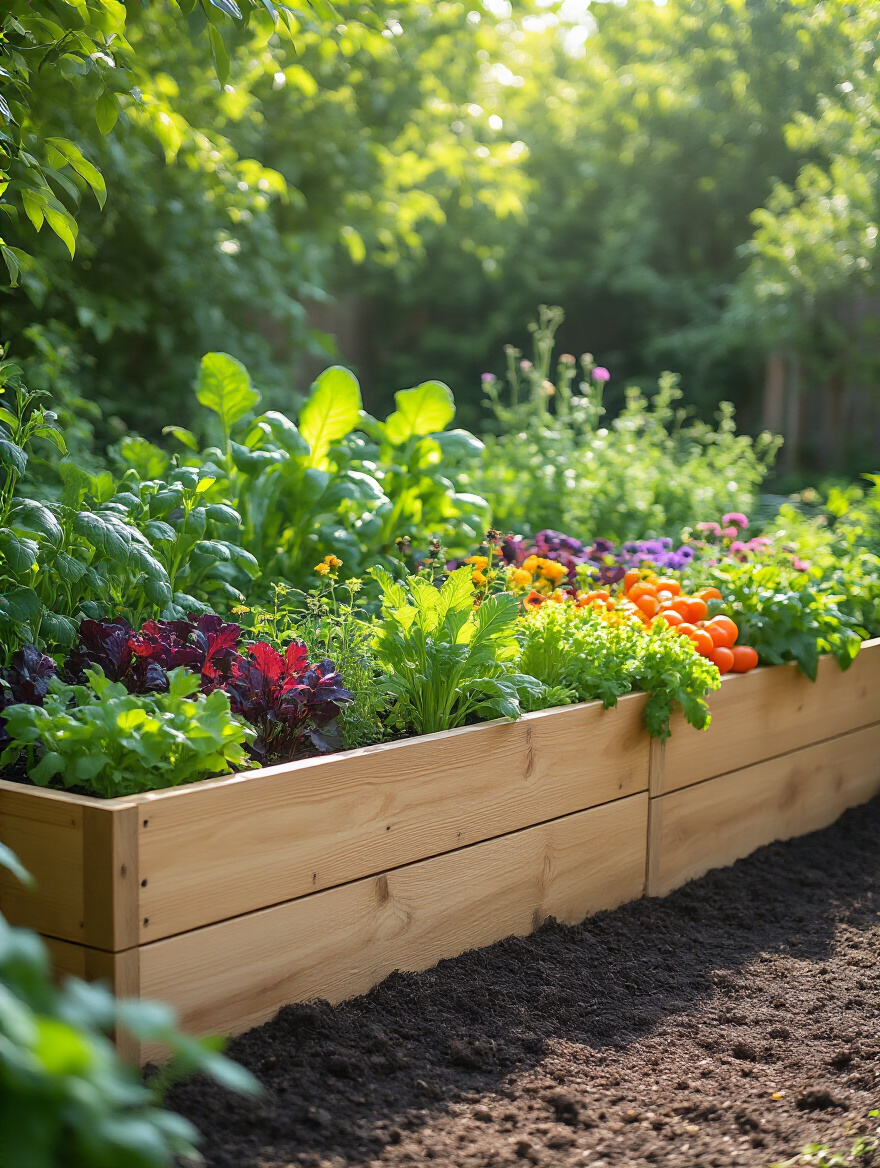
They also give you perfect control over your soil. If you have dense clay or sterile sand, trying to amend a whole garden is a massive undertaking. With a raised bed, you simply fill it with the perfect, fluffy, nutrient-rich soil blend. It’s like giving your plants the absolute best start in life. The soil warms up earlier in the spring, too, which means you get to start planting sooner. They are, in essence, a shortcut to a thriving, accessible garden.
With your gardens established, the next critical layer for creating a true sanctuary is a sense of enclosure.
11. Build a Privacy Solution with Fencing, Hedges, or Screens
You cannot fully relax if you feel like you’re on display. It’s a primal human need. A sense of privacy is non-negotiable for creating a sanctuary. This is the single biggest wellness upgrade you can make to your outdoor space. It’s about creating a feeling of “prospect and refuge”—the ability to see out without being seen. This feeling of being safely enclosed dramatically lowers our stress responses.
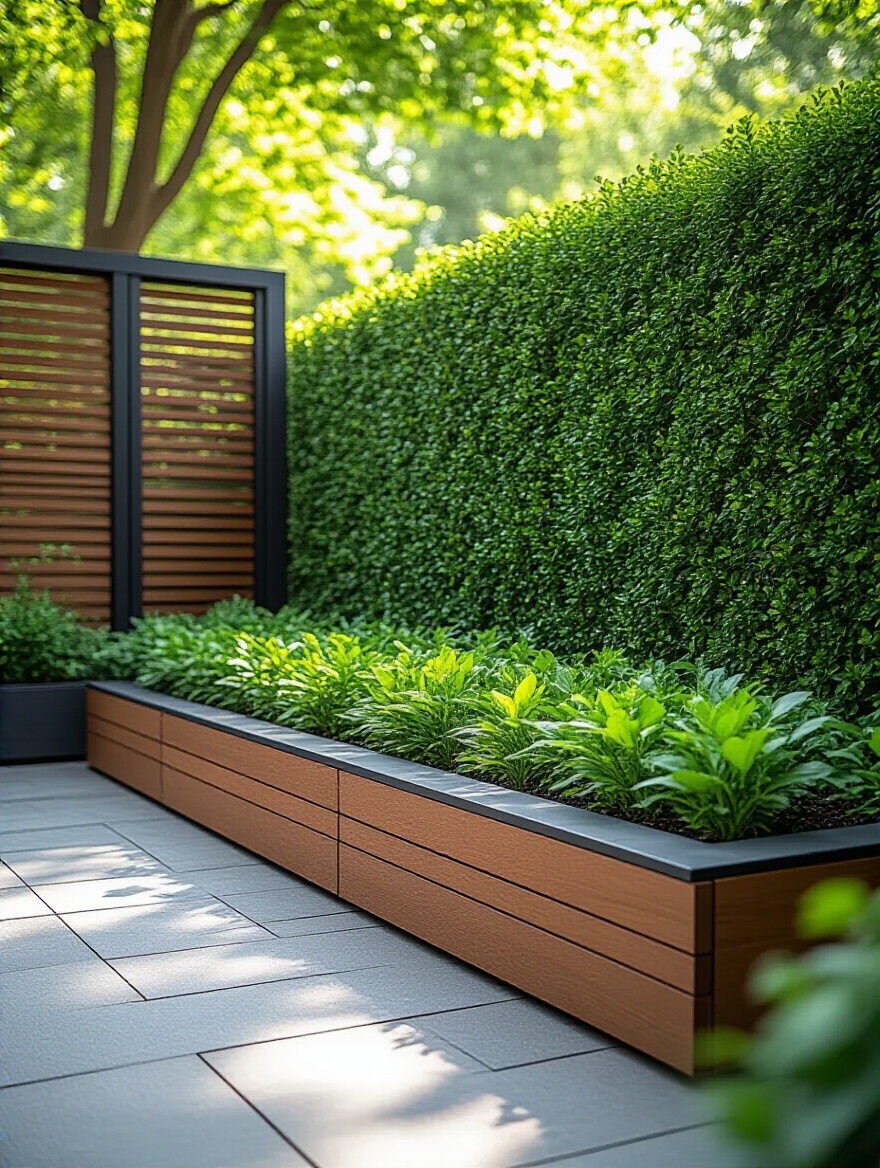
This doesn’t have to mean a six-foot stockade fence (though sometimes it does!). A “living wall” of lush, green hedges can feel much softer while also absorbing sound. A simple trellis with climbing vines or a strategically placed decorative screen can block a specific line of sight to a neighbor’s window. The goal isn’t to build a fortress, but to create a gentle sense of embrace that allows you to let your guard down and just be.
Once your space feels private and safe, we must address the unsung hero of a healthy landscape.
12. Integrate a Robust Drainage System to Prevent Waterlogging
This is the least glamorous part of landscaping, but I swear it’s one of the most important for your peace of mind. A soggy, waterlogged backyard is a constant source of stress. You can’t use it after it rains, it becomes a breeding ground for mosquitoes, it can drown your expensive plants, and in the worst cases, it can cause catastrophic damage to your home’s foundation.
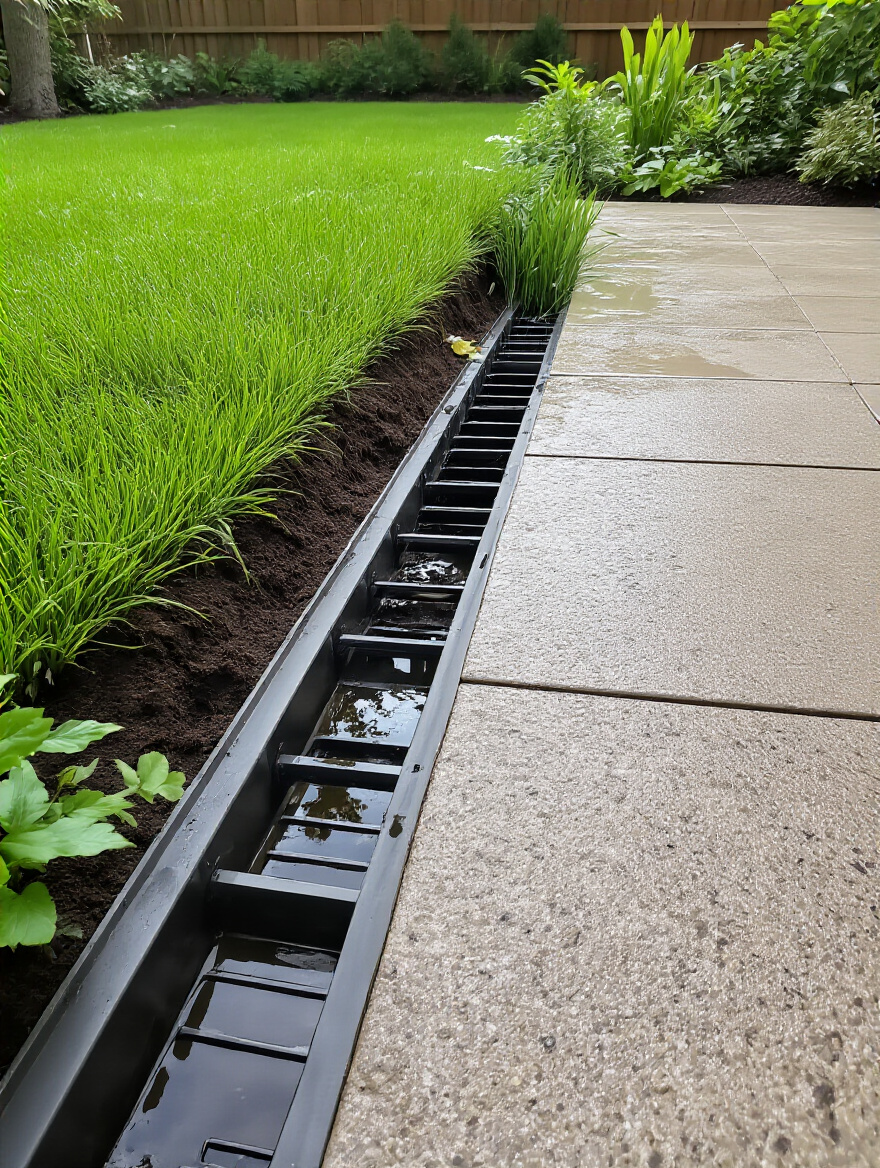
Good drainage is the invisible lymphatic system of your yard. It quietly and efficiently carries away excess water, allowing the ground to breathe. Whether it’s a simple French drain, a strategically graded slope, or permeable pavers that allow water to soak through, solving drainage issues before they start is a foundational act of self-care for your home and landscape. When you know your space can handle a downpour, you can relax and actually enjoy the sound of the rain.
With these foundational systems in place, we can finally focus on the magical elements that elevate the aesthetic and engage the senses.
Elevating Aesthetics: Adding Style, Comfort, and Appeal
Now that the space is functional, private, and healthy, we get to add the layers that delight the senses. This is where we play with light, comfort, and beauty to create an environment that actively restores and inspires you.
13. Design Effective Outdoor Lighting for Ambiance and Safety
What happens in your backyard after the sun goes down? For most people, it becomes a dark, unusable void. A thoughtful lighting plan completely changes that. It’s not about blasting the space with harsh security floodlights—that just creates glare and ruins your night vision. It’s about creating magic with soft, warm, layered light.
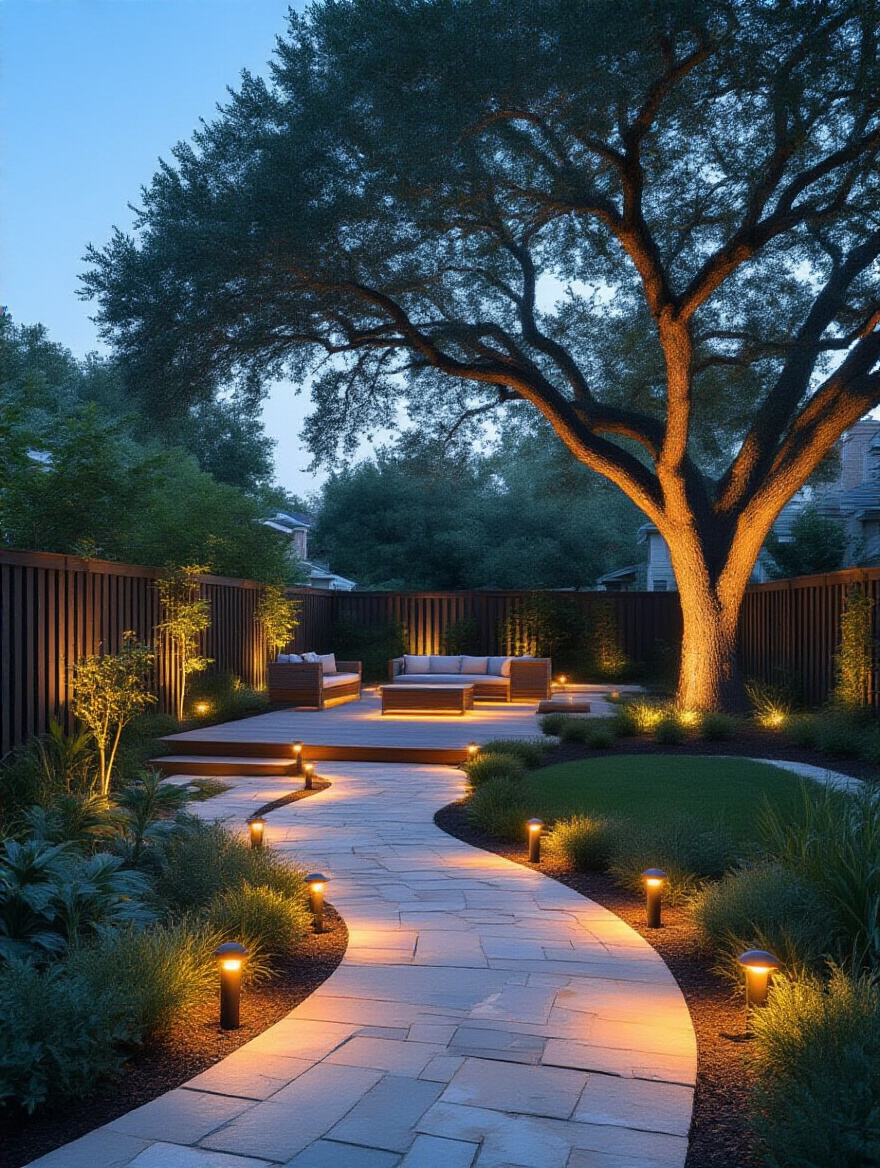
The goal is to use subtle pools of light to create ambiance and guide the eye. A gentle uplight on the textured bark of a beautiful tree, soft lights washing down a stone wall, and low-level path lights that create a safe, glowing walkway—these are the elements that make a space feel enchanting at night. It extends the time you can spend outdoors and transforms the view from inside your home, turning dark windows into beautiful, living portraits. From a wellness standpoint, using warm, low-level light in the evenings also supports your natural circadian rhythms.
Once the ambiance is set, you need a comfortable place to sit and enjoy it.
14. Select Comfortable and Durable Outdoor Furniture for Relaxation
Please, I am begging you, do not buy flimsy, uncomfortable outdoor furniture. That rickety metal chair you can only stand for ten minutes is actively preventing you from relaxing. Your outdoor furniture should be just as comfortable as your indoor sofa. It is an invitation to linger, to put your feet up, to take a nap, to have a long, rambling conversation under the stars.
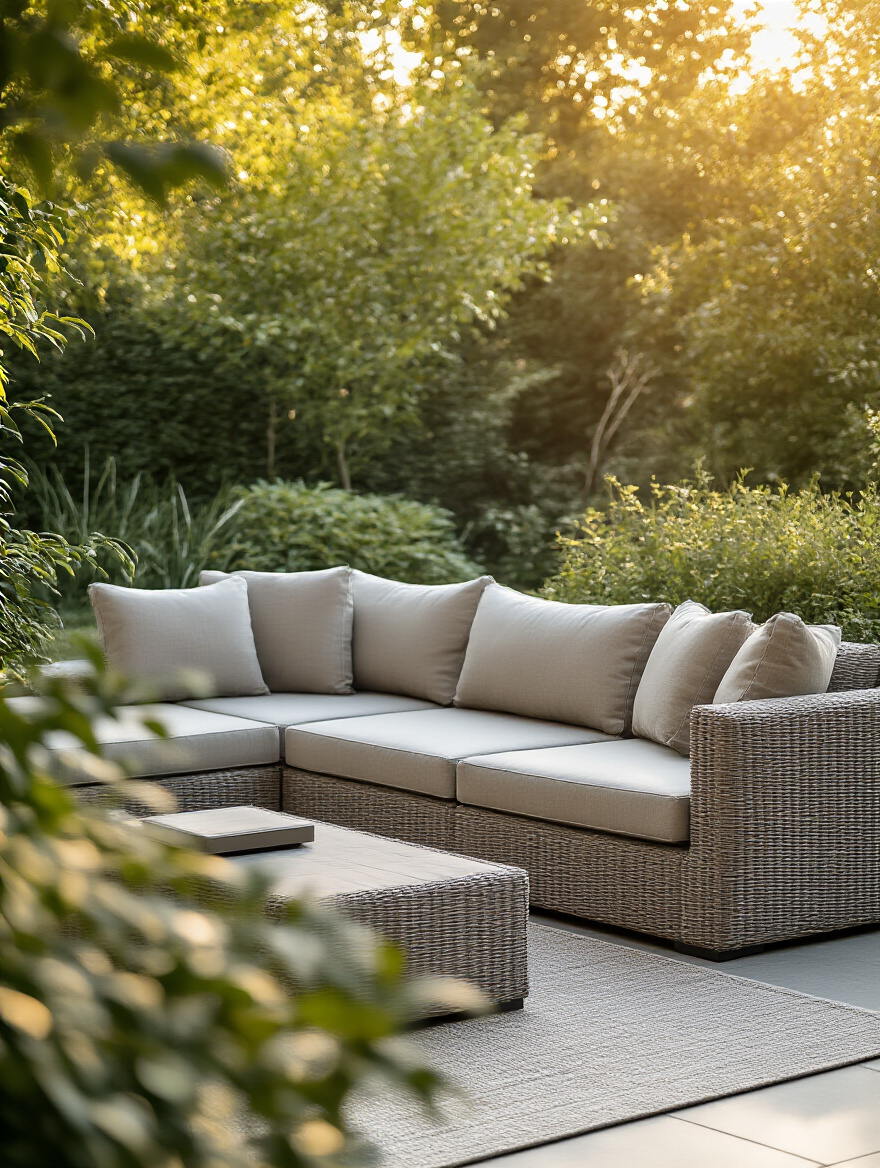
This is an area where it pays to invest in quality. Look for materials designed to withstand your climate, and performance fabrics like Sunbrella that resist fading and mildew. Comfort is paramount. Sit in it before you buy it. Does it support your back? Can you imagine sinking into it with a good book for hours? The furniture itself sends a signal to your nervous system. Comfortable furniture says, “It’s safe to rest here.”
With comfortable seating in place, it’s time to add a touch of soul and personality.
15. Incorporate Captivating Focal Points with Art or Water Features
Every “room” needs a focal point—a place for the eye to rest. In a garden, this can be a beautiful sculpture, a striking specimen tree, or my personal favorite, a water feature. The gentle sound of moving water is one of the most powerful tools we have for creating a tranquil environment. It has been scientifically shown to lower blood pressure and reduce stress hormones because it masks distracting noises like traffic and signals to our primal brain that we are in a life-sustaining place.
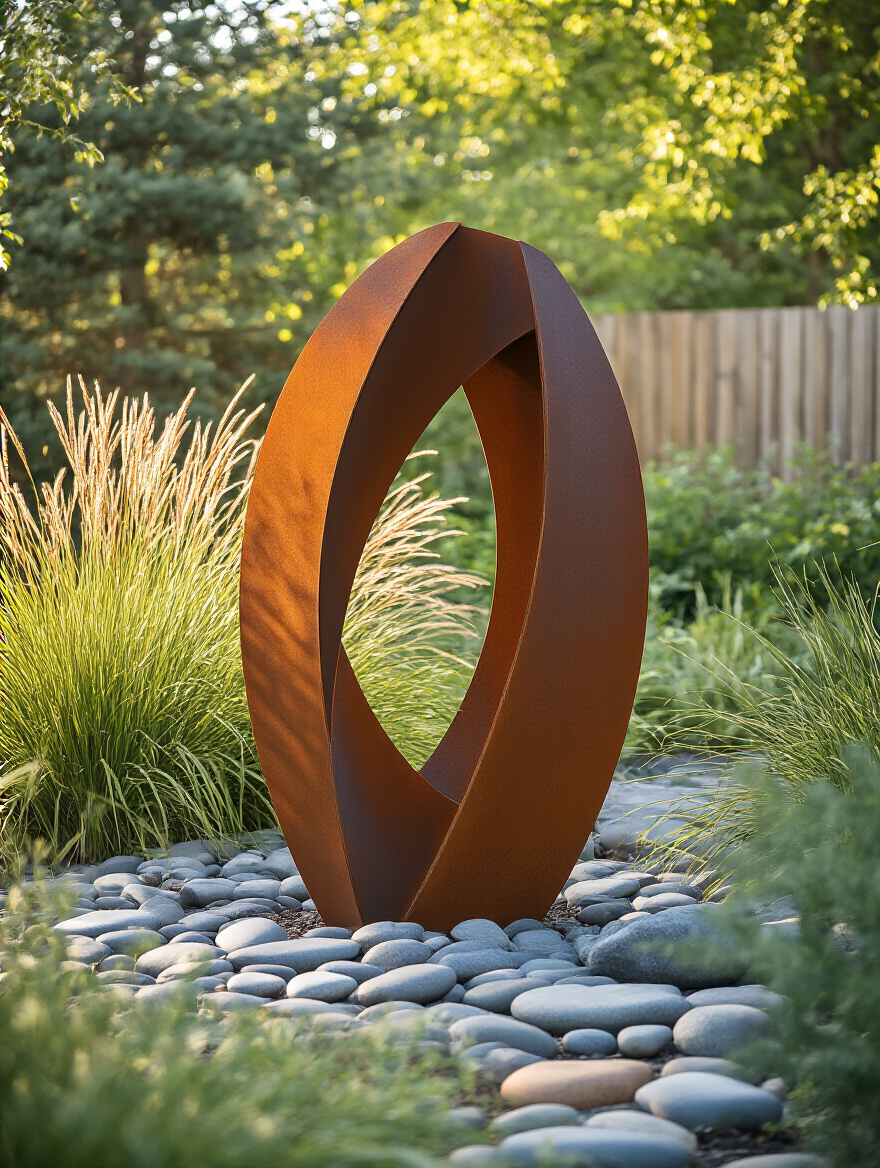
A focal point doesn’t have to be large or expensive. A simple bubbling urn or a small, self-contained fountain can have a profound impact. It adds a dynamic, living element to the garden. It gives you something to watch and listen to, a meditative anchor that draws you into the present moment. It transforms the garden from a static scene into a sensory experience.
This sensory experience is made even richer when your garden is truly alive with activity.
16. Attract Pollinators with Butterfly and Bee-Friendly Plant Choices
There is nothing that makes a space feel more vibrant and alive than seeing it filled with the gentle hum of bees and the dance of butterflies. This is biophilia in action—our innate human need to connect with nature. Intentionally planting flowers that support local pollinators does more than just help the ecosystem; it helps you. Watching these creatures go about their work is a simple, mindful activity that can pull you out of your own head and into the wonder of the natural world.
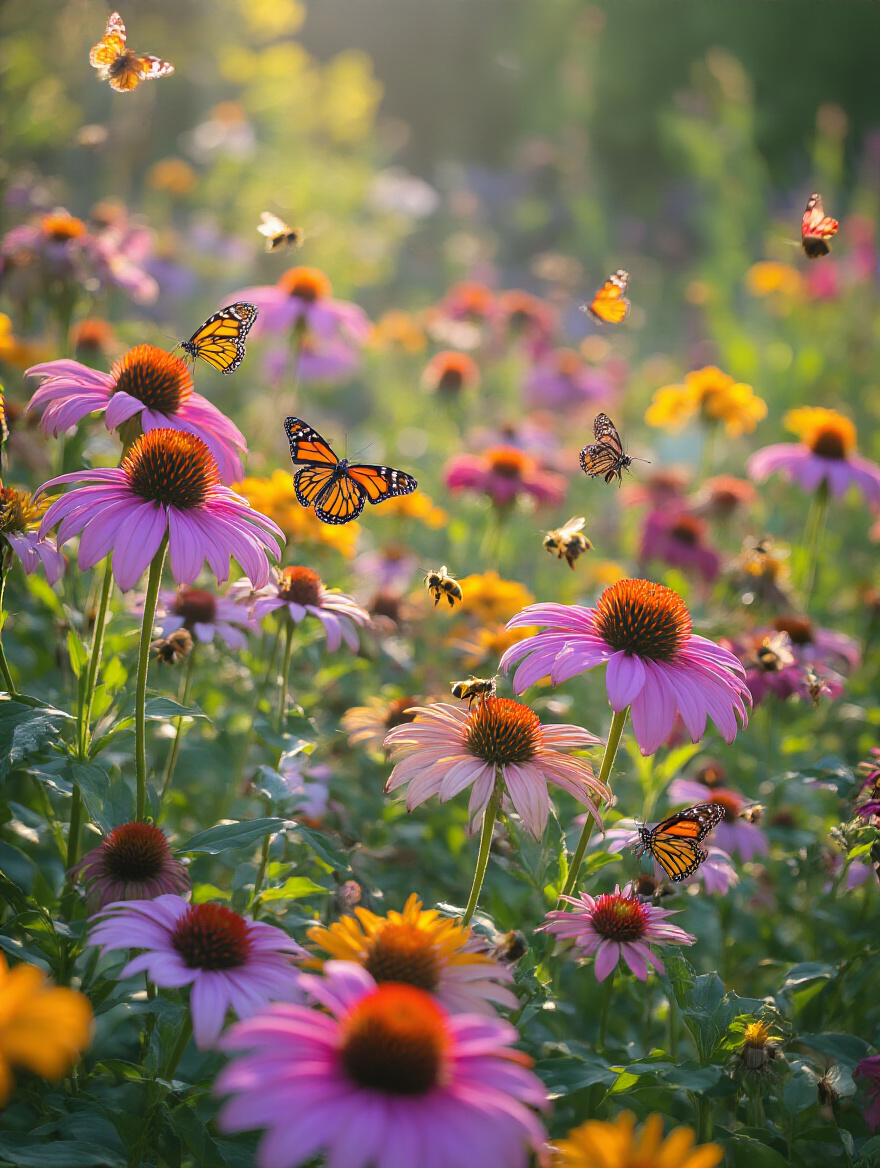
The key is to plant a variety of shapes, sizes, and colors that bloom at different times, providing a buffet from spring through fall. Focus on native species, as they are the most beneficial for local insects. A garden without pollinators feels sterile and still. A garden that is buzzing with life feels dynamic and joyful. You are actively participating in the web of life, and that feeling of contribution is deeply good for the soul.
With your sanctuary designed and built, the final step is to learn the gentle rhythms of caring for it over time.
Sustaining Your Sanctuary: Maintenance, Efficiency, & Evolution
A garden is not a static object you create once; it’s a living system that you enter into a long-term relationship with. The final key to a low-stress, high-joy backyard is to embrace this evolution with simple, mindful practices that sustain both the garden and you.
17. Develop a Consistent Watering and Fertilization Schedule
The word “schedule” can sound rigid, but in the garden, it’s about rhythm. It’s about attuning yourself to the needs of your plants. Instead of watering on a strict calendar, get in the habit of sticking your finger into the soil. Is it dry a few inches down? Then it’s time for a deep, thorough drink. This practice of observation turns a chore into a moment of connection.
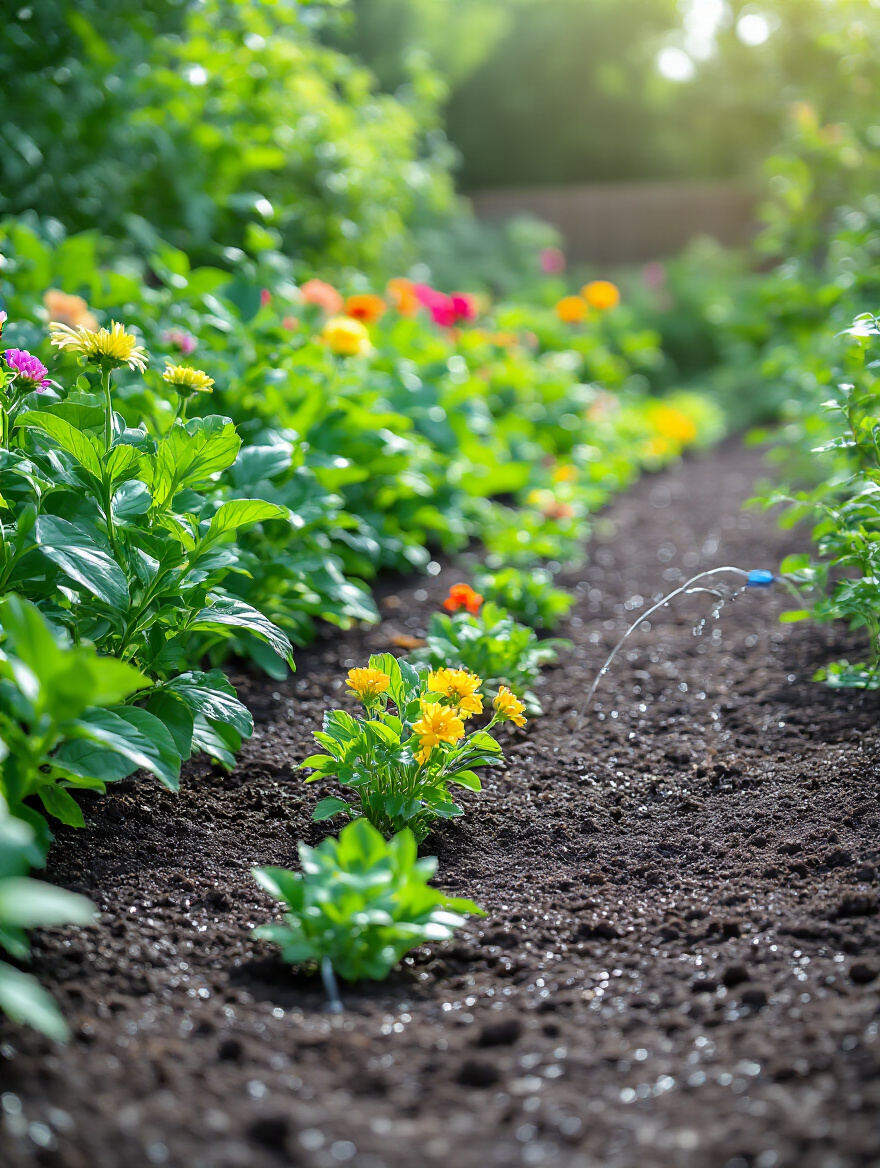
The same goes for feeding your plants. You’re not just scattering generic fertilizer; you’re feeding the soil itself with rich, organic compost. You’re nurturing the entire system. When you give your plants what they truly need, they become more resilient and require less intervention. This consistent, mindful care is a quiet, repetitive practice that can be incredibly meditative.
This proactive nurturing is the best way to prevent the stress of dealing with pests and diseases.
18. Implement an Integrated Pest Management Strategy for Healthier Plants
The old way of thinking was to see a bug and immediately reach for a chemical spray to annihilate it. This approach is like dropping a bomb to solve a disagreement. It creates more problems than it solves by killing beneficial insects and disrupting the entire ecosystem. The wellness approach is Integrated Pest Management (IPM), which is all about creating a garden so healthy and balanced that pests never become a major issue.
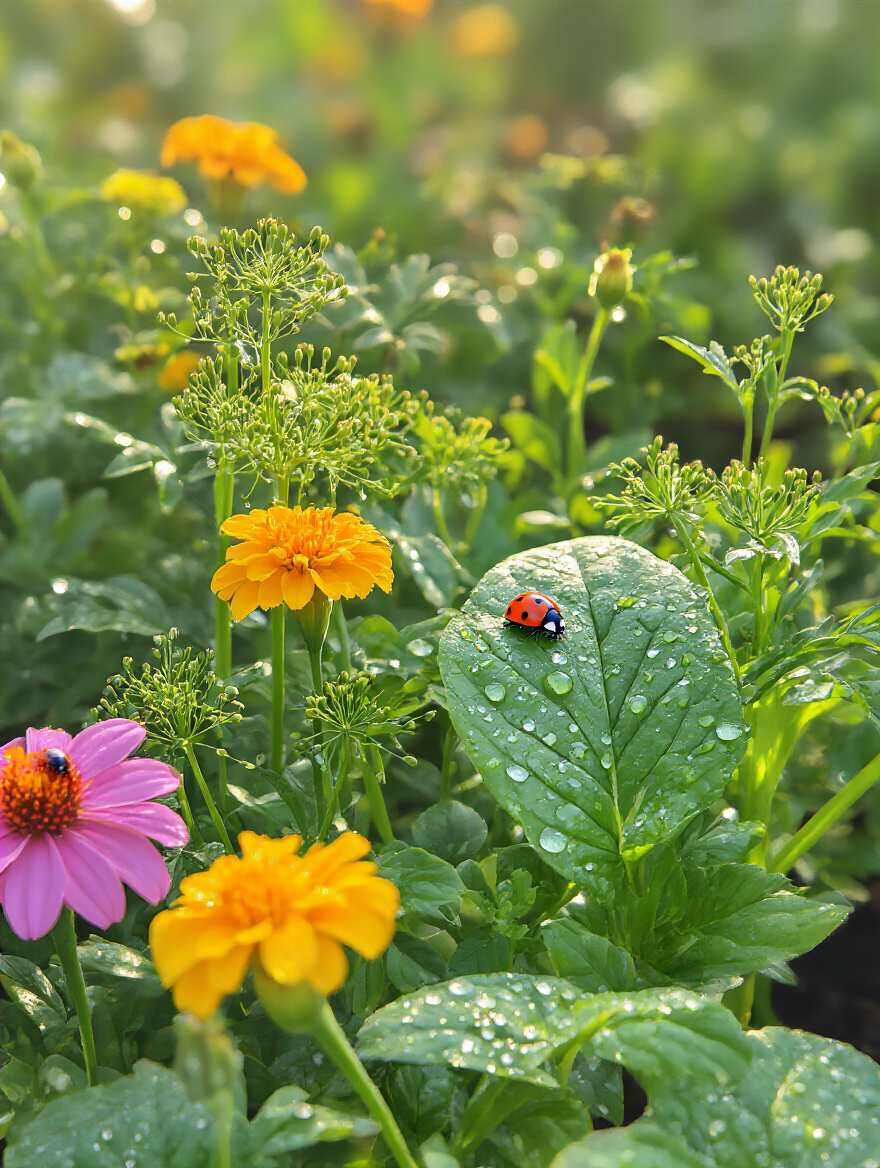
This means starting with healthy soil, choosing resistant plant varieties, and inviting in beneficial insects—like ladybugs and lacewings—that are natural predators of common pests. If a problem does arise, you start with the least toxic solution first, like a strong jet of water from the hose or hand-picking beetles off leaves. It’s a holistic approach that sees your garden as a complex system and works to keep it in balance. It replaces the stress of chemical warfare with the satisfaction of being a steward of a healthy ecosystem.
This stewardship also involves the gentle art of shaping and editing your plants as they grow.
19. Master Pruning and Deadheading Techniques for Optimal Plant Vigor
Pruning is a conversation with a plant. You’re not just hacking away at it; you’re making thoughtful cuts to encourage healthier growth, more flowers, and a stronger structure. Deadheading—the simple act of snipping off spent flowers—is a magical trick. It tells the plant, “Don’t waste energy making seeds! Make more flowers instead!” It’s a simple, repetitive task that has an immediate, beautiful reward.
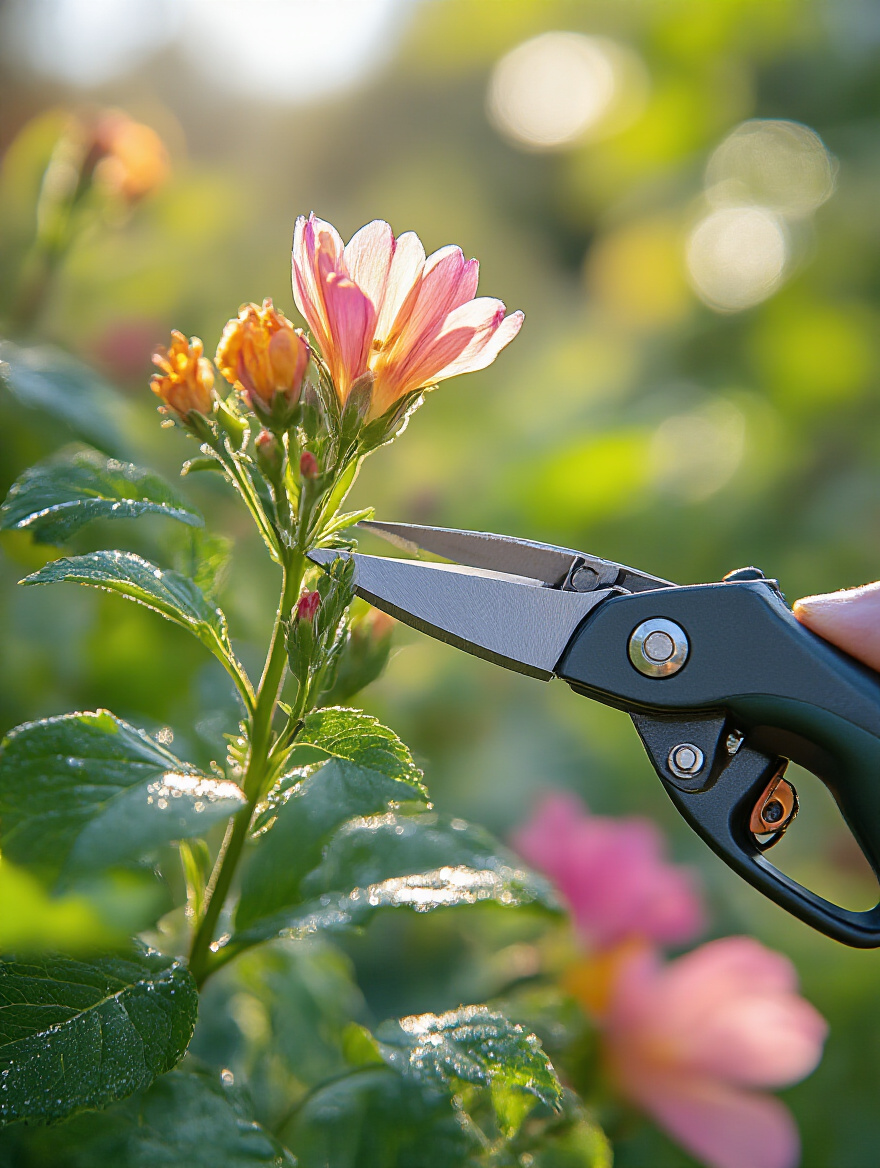
There’s a powerful life metaphor here. Pruning is about letting go of what is dead or no longer serving the plant to make space for new, vibrant growth. It can be a very satisfying, mindful practice. When you have the right tools and a little knowledge about what each plant needs, pruning stops feeling intimidating and becomes an art form—a way to gently guide your garden toward its most beautiful and abundant expression.
Finally, the most important practice of all is to embrace the beautiful, imperfect nature of a living garden.
20. Plan for Seasonal Changes and Future Landscape Evolution
A garden is never “finished.” A tree you plant today will look completely different in five years. A perennial will expand and need to be divided. Your own needs will change—the kids will grow up and that play structure might become the perfect spot for a quiet meditation bench. The most profound source of peace you can find in your backyard is to let go of the idea of perfection and embrace its evolution.
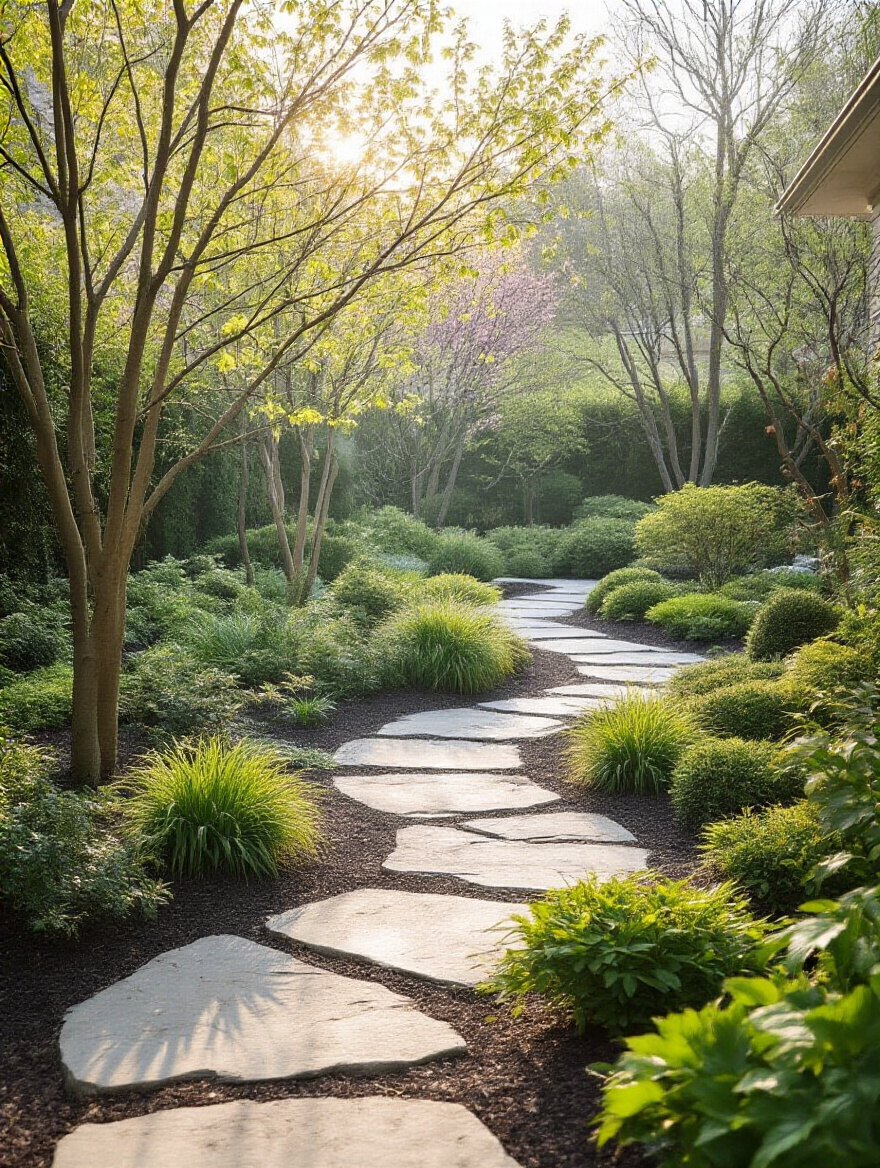
Design with this change in mind. Choose plants for four-season interest—things that have beautiful bark in the winter, vibrant berries in the fall, or striking seed heads long after the flowers fade. Create flexible spaces that can adapt with you. A garden isn’t a pristine photo; it’s a dynamic, ever-changing partner in your life. To love your garden is to love its process, its cycles of growth and decay, and its beautiful, messy, living reality.
Conclusion
There you have it. The secret isn’t a single design trick or a magic plant. The secret to creating a backyard that genuinely nurtures your well-being is to see it not as a project to be completed, but as a relationship to be cultivated. It’s about listening to the land, understanding your own deepest needs, and making intentional choices that support both. Your backyard has the profound potential to be your sanctuary, your therapist, your gym, and your church, all rolled into one.
So, take a deep breath, step outside, and just look. Don’t see the weeds or the patchy lawn. See the potential. Start with one small thing that would bring you a feeling of peace or joy. Whether it’s a comfortable chair in a sunny spot or a single pot of fragrant herbs by the door, just begin. You are not just creating a landscape; you are co-creating a space that will hold you, restore you, and connect you to the simple, profound beauty of the living world. And that is an incredible gift to give yourself.
